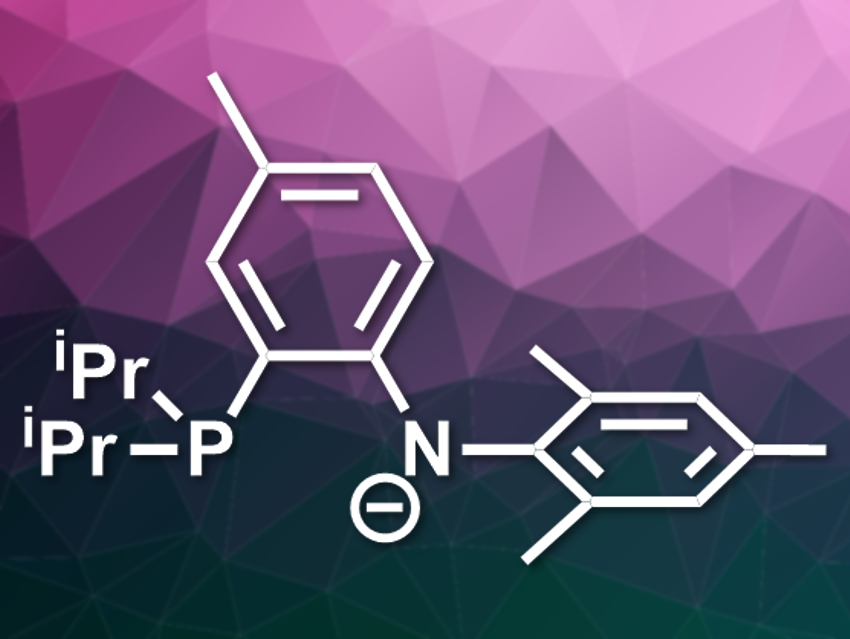The lanthanides have a versatile coordination chemistry, which makes their complexes interesting to study and allows for the synthesis of compounds with useful properties. The variety of ligands used in this field, however, is comparatively small so far—with cyclopentadienyls as the most commonly used ligands.
Stephan Hohloch, University of Innsbruck, Austria, and colleagues have synthesized a new series of lanthanide(III) complexes (with Ln = La, Ce, Nd, Gd, Tb, Dy, Lu) using the monoanionic bidentate anilidophosphine ligand N-(2-(diisopropylphosphanyl)-4-methylphenyl)-2,4,6-trimethylanilide (PN–, pictured). The team prepared the potassium salt of the ligand from the neutral precursor HPN using potassium hexamethyldisilazide (KHMDS) and the lithium salt using n-butyllithium (nBuLi). The team obtained a range of new complexes with either one or two PN– ligands by reacting these salts with lanthanide halide complexes (e.g., LnCl3(THF)x) or complexes of the type Ln(HMDS)3.
The team investigated the reactivity of the products and found that the chloride and iodide complexes of La and Lu with two PN– ligands are useful starting materials for further functionalization. Via salt metathesis, the team obtained La and Lu complexes with, e.g., mesitolate or thiomesitolate ligands.
- Monoanionic Anilidophosphine Ligand in Lanthanide Chemistry: Scope, Reactivity, and Electrochemistry,
Fabian A. Watt, Athul Krishna, Grigoriy Golovanov, Holger Ott, Roland Schoch, Christoph Wölper, Adam G. Neuba, Stephan Hohloch,
Inorg. Chem. 2020.
https://doi.org/10.1021/acs.inorgchem.9b03071




